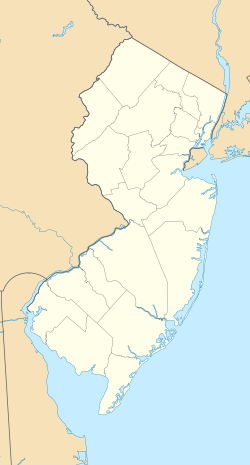Albert J. Zabriskie Farmhouse | |
 Southern view (c.1977) | |
| Nearest city | Paramus, New Jersey |
|---|---|
| Coordinates | 40°58′12″N74°4′39″W / 40.97000°N 74.07750°W |
| Area | 0.5 acres (0.2 ha) |
| Built | 1805 |
| Architectural style | New Jersey Dutch |
| NRHP reference No. | 77000847 [1] |
| NJRHP No. | 621 [2] |
| Significant dates | |
| Added to NRHP | November 7, 1977 |
| Designated NJRHP | March 28, 1977 |


The Albert J. Zabriskie Farmhouse is located at the current address of 7 East Ridgewood Avenue in Paramus, Bergen County, New Jersey, United States, just east of New Jersey Route 17. This is one of several Zabriskie historic sites associated with the descendants of prominent settler Albrycht Zaborowski (1638–1711). This stone house was built in 1805 by Albert Jacob Zabriskie (1760–1835) in the New Jersey Dutch style, owned by four generations of the family until 1924, and added to the National Register of Historic Places on November 7, 1977. Due to confusion from the street name and handwritten notes on one page of the NRHP nomination, the building is sometimes mistakenly listed as being in Ridgewood, New Jersey. [3]




